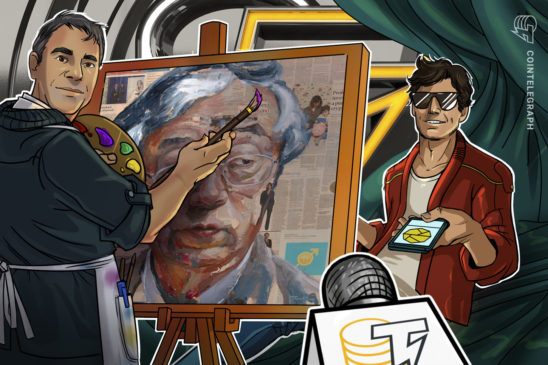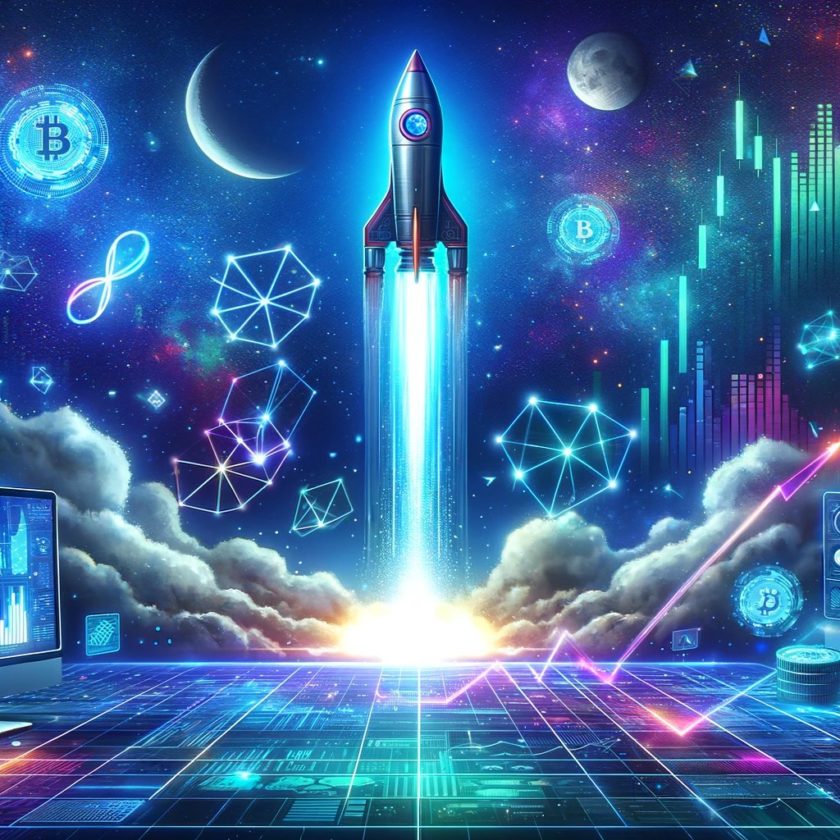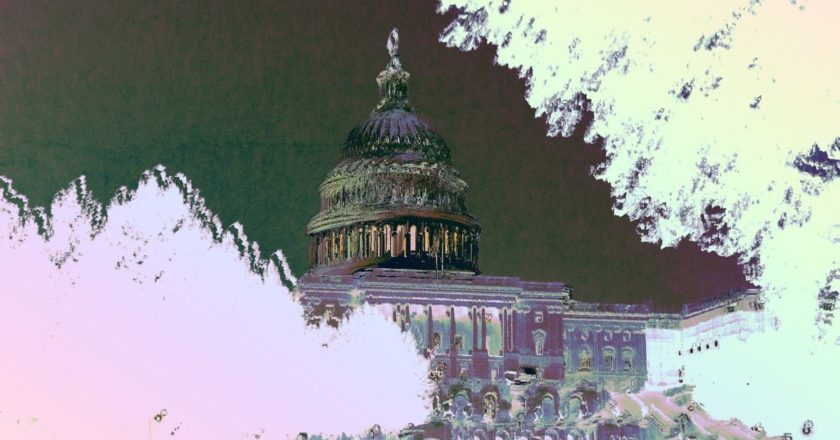Nifty Gateway, a leading marketplace for nonfungible tokens with the backing of the Winklevoss brothers, recorded its largest-valued auction to-date on July 23 when the digital artwork and NFT “Picasso’s Bull” sold for $55,555.55.
The milestone comes as benefits of fractionalized ownership, decentralized provenance verification and the global liquidity pool enabled by blockchain technology are enticing both art creators and investors to explore NFTs.
A surreal couple of days. #NFT art records broken by Picasso’s #Bitcoin Bull. Huge excitement & now followed on Twitter by people like @JWilliamsFstmed @tylerwinklevoss @APompliano 🤯
I do enjoy a challenge but I’m feeling the pressure for my follow up artworks. @niftygateway pic.twitter.com/WFuCBfIS6r
— Trevor Jones 🎨 (@trevorjonesart) July 25, 2020
Cointelegraph spoke to Trevor Jones, the creator of the record-priced NFT, and the artwork’s buyer, Pablo Rodriguez-Fraile of Museum of Crypto Art, to find out why they believe cryptographic tokens are the future of art.
Sam Haig (SH): How long have you been active in the cryptocurrency and blockchain space?
Trevor Jones (TJ): I don’t have a technical background per se but after a successful solo exhibition at the end of 2016, I had some money to invest, which led me to Bitcoin. I spent the latter half of 2017 researching and investing in cryptocurrency and then decided to work toward a crypto-themed painting exhibition for 2018, which was called “Crypto Disruption.”
Pablo Rodriguez-Fraile (PRF): We have been investors in the space for about four years now, having been early to Ethereum and major participants in the 2017 ICO season and beyond […] Outside of investments related to NFTs, we have participated in early investments in Algorand, Hashgraph, Klaytn or Avalanche, to name just a few.
SH: When did you first encounter NFTs?
TJ: I was invited to show some of my work at CoinFestUK in Manchester in April 2019. It was my first crypto conference, so there was a lot for me to take in. I ended up chatting with David Moore, the CEO of the NFT art marketplace KnownOrigin. He was trying to explain the concept behind NFTs to me.
All I remember thinking at the time was that this wasn’t going to work, and especially with me being an artist creating physical work in paintings, there was no point in me exploring it. I was so wrong!
PRF: Like a fair amount of people, CryptoKitties was our “first encounter.” But we did not really begin to see the power of NFTs until we connected the dots on blockchain-based virtual land (Somnium Space, in particular) and crypto art. We used this as the building block to understand how important NFTs would become in representing both digital identities and brands for individuals and businesses alike.
Jones’ first NFT auction sparks a bidding war
SH: When did you begin exploring creating art in the form of NFTs?
TJ: It was five or six months after my conversation with David around September when I began noticing a lot more artists appearing on crypto-Twitter and talking about NFTs and the various marketplaces popping up. A lot of interest and excitement was developing around the digital art scene and when I saw a few artists selling their work for decent prices, I had to admit I was wrong (after my conversation with David) and that I needed to investigate this art phenomenon much more thoroughly and with an open mind.
I waited until December to mint my first NFT, which was a collaboration piece with the talented digital artist Money Alotta. Alotta had already been working in the NFT space for some time and so he helped me out a lot with the technical aspects of the process. There was a lot of excitement generated around our NFT drop “EthGirl” and after a serious bidding war, it was sold for 70 ETH ($10,080), smashing the ATH record on SuperRare by seven times.
Due to the fact that my NFT animations derive from my physical paintings, my work is exceptionally scarce. Since “EthGirl,” I’ve only created 12 NFTs (in nine months) and I believe this is one of the key reasons why I’ve hit the ATH sales record on all the major marketplaces — SuperRare, KnownOrigin, MakersPlace and now Nifty Gateway.
SH: What appealed to you about NFTs as an asset class to invest in?
PRF: Recording both land titles and art provenance on a blockchain always made sense to us. Some of the primary benefits of NFTs are low-cost transferability, ease of storage, display options between physical and virtual worlds, lack of incentive for theft (as opposed to Bitcoin or Ethereum, which can be mixed). NFT projects also offer automated secondary sale royalties and the ability for artists to represent themselves to global markets without gallerists as intermediaries.
SH: What was the first NFT you purchased?
PRF: Land acquired during the Decentraland auctions. Our first piece of crypto art, fittingly enough, was “LADY LUCK” by miss al simpson.
SH: Will you continue to invest in NFTs, and in what ways would you like to see the space evolve over time?
PRF: Of course, we will always be interested in acquiring historic pieces of crypto art for [MOCA]. Frankly we feel this is a beautiful and wonderful community, and there is not a lot we would change. As new money enters this space, we will be tested, and I hope everyone can remain true to what attracted them here in the first place. If we could make one critique, we would encourage all collectors who are just speculating with assets held in “vaults” to find ways to further prove the use case for NFTs!
Related: NFT Week by Cointelegraph Magazine
NFTs are the future of art
SH: What are some of the benefits offered by NFTs that are most appealing to you as an artist?
TJ: Now that I’ve fully got my head around the rare digital art market and art concept, I see so many benefits, especially from the viewpoint of a physical artist/painting like me:
Creating digital animations with soundtracks is super exciting for me. NFT animations enable me to express my creative ideas and traditional artwork in completely new and dynamic ways that I’d never even thought of before and, importantly, to be able to monetize them.
Physical paintings and prints can be damaged over time if not properly cared for, whereas my digital work will always remain in the exact same visual state as when created.
Selling my physical painting via a JPG or “still image” NFT not only adds extra value to the painting but it ensures future collectors have access to my sales records. This transparency of my painting sales prices instills buyer confidence in my work and reputation — i.e., they know that I’ve not overinflated my prices, as they can easily see what other pieces have sold for and when.
Cost of international artwork delivery is very expensive (customs tax, insurance, professional packaging, etc.), whereas purchasing an NFT costs only a small gas fee.
It’s a lot easier for buyers/collectors and artists to benefit from the secondary art market. Auction houses are the main place to sell paintings on a secondary market. They take around 30%, and it’s a lot of hassle even getting an artwork in and up for sale. Moreover, artists are now getting a material percentage on secondary sales. So, for example, my “Picasso’s Bull” art drop on Nifty Gateway has allowed me to twice realize income from the sale, on the initial drop and also the secondary sale. An artist getting a piece of the secondary market sale is almost unheard of in the traditional art market.
Editions can be created easily — the digital version of the traditional print edition concept — so buyers/collectors who can’t afford a 1 of 1 can still collect an artist’s work in the form of an edition.
Fractionalizing (offering “shares” in an artwork) is now possible, and I’ll soon be offering fractional ownership of my physical paintings through NFTs.
Of course, being a painter for the better part of 20 years, I’ll always be partial to the experience of standing in front of a physical work of art. This feeling can’t be replicated in the metaverse… yet. Who knows what will happen, but I’m 100% confident that although digital art and experiencing it in virtual reality will become a huge part of the story of art, physical artworks will always be cherished and valued.
The interviews were edited and compressed for clarity.




